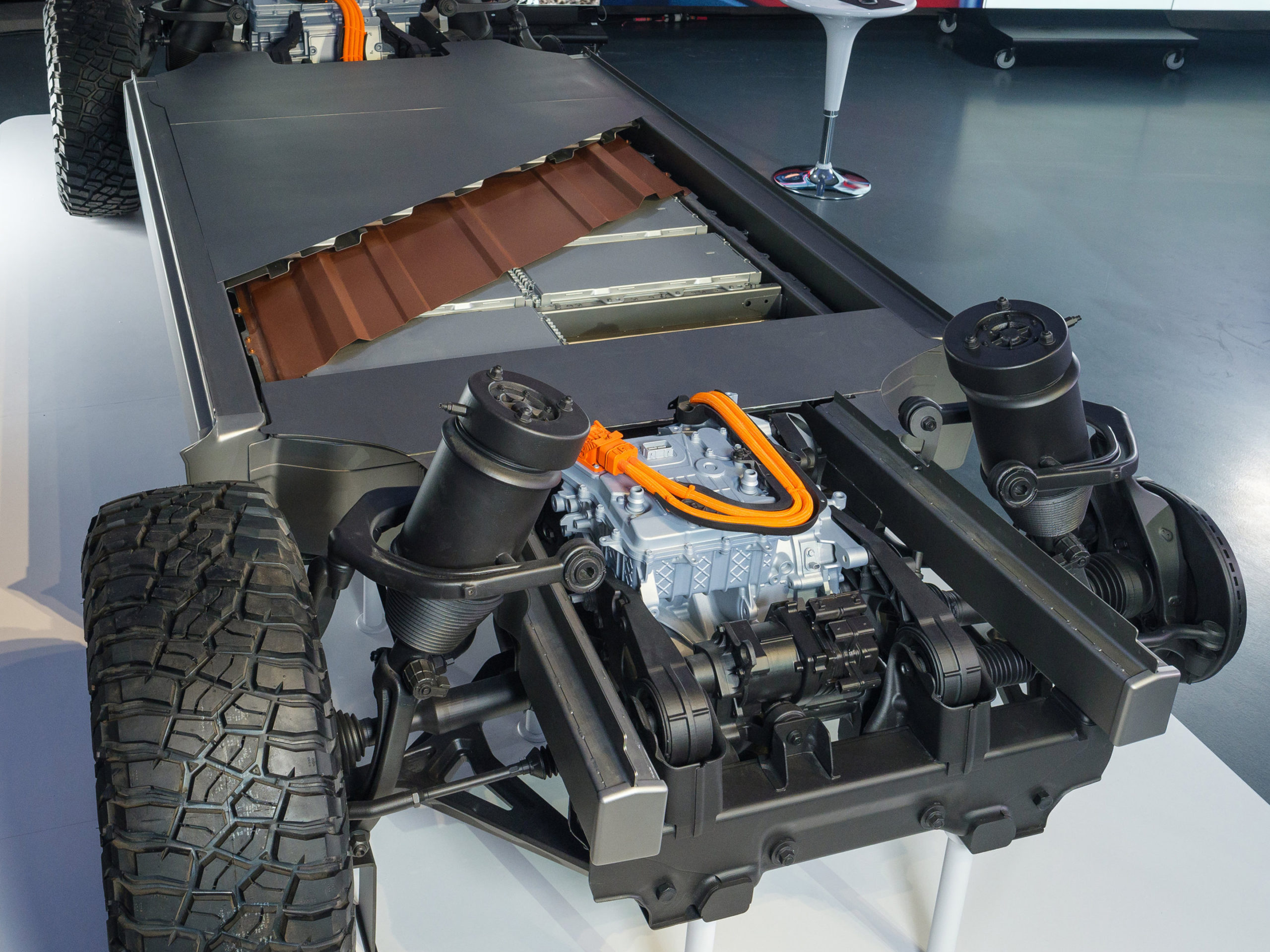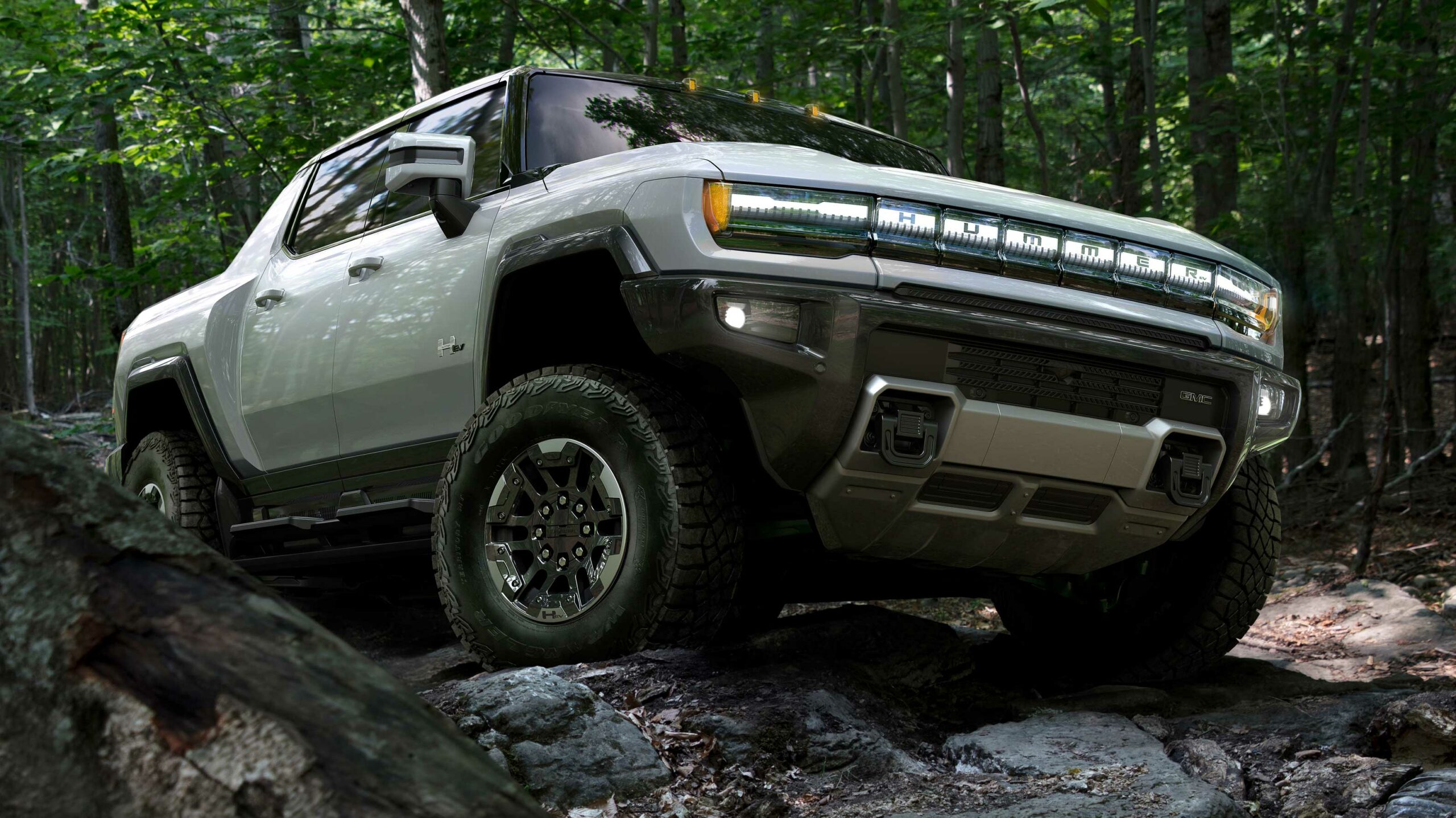
As Canada’s electric vehicle market continues to expand, MobileSyrup had the opportunity to chat with GM Canada CEO Scott Bell about the company’s electric vision for the future, the recently launched EV Hummer and what role Canada plays in GM’s future.
GM has gone through a few changes over the last few years, with a renewed focus on EVs with its anticipated Ultium battery project and a new test track on Oshawa, Ontario.
What the electric Hummer means for GM
Bell has a lot of excitement for the electric Hummer and it’s hard to blame him. GM’s taken its most notoriously gas-guzzling powerhouse of an SUV and flipped it on its head to become the company’s new flagship electric super truck.
While it might not be the regular consumer-focused electric truck many EV enthusiasts were waiting for, it still packs several exciting features that should help GM hone in on what works and doesn’t work in an electric truck.
Bell says that GM was looking to make a bold statement by reviving the Hummer brand. The fact that the EV Hummer can feature 1,000 horsepower and an estimated 11,500 lb.-ft of torque shows that electrified vehicles can compete and overcome their gasoline-powered counterparts.
Tesla’s Cybertruck also features comparable specs with its Tri-Motor AWD trim option promising 14,000 lbs of towing capacity and a 0 to 100 km time in 2.9 seconds
The EV Hummer even has a 0-97km time of three seconds, making it almost as fast as the astounding Porsche Taycan.
Overall, Bell says, “we did exactly what we wanted it to do, which was just kind of break the mould of how you think about electric vehicles going forward.” As we continued our conversion about the Hummer, it increasingly seemed like Bell is sold on EVs being the future as he listed off several features he thinks give EVs an advantage over regular vehicles.
“Really, you don’t have to sacrifice anything right — electrification is cleaner, it’s quieter, it’s quicker, it’s more responsive, there’s more room because you don’t have engines and fuel tanks, and you know, it breaks less frequently, there are less moving parts and no oil changes or fuel stuff. I mean, you can go on and on about how great electric is, but we’ve got a ways to go to get the public to really think that way,” said Bell.
Another thing about the Hummer that Bell emphasizes is how fast GM has been able to move it from concept to reality. For instance, the new Hummer only had a 98-week development cycle, which GM says is about half as long as its previous cycle average.
This is something it seems like more legacy automakers are focusing on as they scramble to move from traditional gas engines to electrification. For example, when Ford revealed the electric Mustang Mache-E, it highlighted the same thing.
GM’s Canadian presence
GM has scaled back its assembly ambitions in Canada for now, but that’s not to say that the Canadian market doesn’t play an essential part in the manufacturer’s electrified future.
For instance, the company has almost completed a new 55-acre test track in Oshawa that should make it easier for its Canadian R&D department to test out projects without coordinating a way to take them south of the border.
While Fiat Chrysler and Ford promised to retool their Canadian assembly plants earlier this year to make electric vehicles, Bell says that GM doesn’t necessarily plan its factory upgrades around labour negotiations. Therefore, instead of focusing on EVs in Canada, it needs to produce more pickup trucks since they’re still a very popular vehicle for GM. Bell says that someday GM plans to open electric vehicle plants in Canada, but there’s no mention of when.
That said, GM has around 800 engineers on staff in Canada split between two facilities in Oshawa and Markham, Ontario, which is the largest team of automotive engineers in the country. This team works on all kinds of automotive tech, including the increasingly important electrification project.

General Motors reveals its all-new modular platform and battery system, Ultium, Wednesday, March 4, 2020 at the Design Dome on the GM Tech Center campus in Warren, Michigan. (Photo by Steve Fecht for General Motors)
Specifically, these teams work on Super Crusie, infotainment, safety systems, and unique challenges like heating and cooling EVs since they work differently from traditional cars.
Overall, GM has committed to hiring 3,000 more engineers worldwide, and Bell says that a chunk of that hiring is likely to happen in Canada.
Bell says that General Motors likes having its offices located in the Greater Toronto Area (GTA) because the GTA-to-Waterloo corridor is full of top tech talent, startups, universities and many other places to source educated and talented workers.
Bell also mentions that Canadian electric parts manufacturers are playing a large role in GM’s electric future by supplying parts to the company’s three electric assembly plants in the United States. He estimates that these supplies add up to around a $200 million business split between these part manufacturers, with expectations that it will grow in a couple of years as the automaker starts building more EVs.
Canadian EV part manufacturers have been actively working to pad out their electric car experience with an electric car concept project named after the Avro Arrow.
GM’s thoughts on Canada’s path to electrification
When I interviewed with Bell, it was shortly after Quebec announced that it‘s banning the sales of new gasoline-powered vehicles by 2035, which followed B.C.’s similar announcement regarding plans to ban new gas vehicles by 2040.
When I questioned Bell regarding GM’s feeling about this since it’s such a large-scale gas-vehicle manufacturer, he said he isn’t worried about incoming regulations because he sees consumers going that way anyway.
“The consumer is getting there very quickly on the product, where they need help is in the infrastructure.” He does mention that he did more than 90 percent of his charging at home when he used a Bolt EV. When Canadian EV owners need to travel longer distances in EVs, the charging infrastructure still isn’t perfect.
“As our competitors come into the market, many of them weren’t existing automakers in the past and, they don’t have that advantage”
Bell sees GMs role as making the cars with better charging times and range, but he’d hope that the government will work with private companies to help build out the needed charging infrastructure and educate consumers on what it’s like to own an EV in Canada.
At the end of the day, he says that GM and the government share the same goal of “getting everybody into an electric vehicle as soon as we can.”
GM Canada is moving forward
Bell likes to say that the GM he works at now is different than it used to be since it’s moving faster and with more innovation, as it breaks the customary norms it has abided by for the last 100 years.
Beyond that, he’s also excited about the technological leaps that the Canadian R&D team has been making and how many Canadians are adopting EVs. Only three percent of people in Canada have bought EVs so far, yet it’s still above the two percent in the U.S. market.
When asked about GM’s advantage compared to newer EV makers like Tesla and Rivian, he thinks that it’s the company’s dealer network. Having dealers teach people about EVs should help people get over their hesitance to adopt the new vehicle format. According to Bell, this will allow GM to scale its EV market share quickly.
“As our competitors come into the market, many of them weren’t existing automakers in the past and, they don’t have that advantage. I think they see it as an advantage the other way, where they don’t have a [dealer] network to worry about, but quite frankly we’ve taken the completely opposite approach, and I think consumers will appreciate having [a dealer]. Especially when you’re trying new technology,” said Bell.
That’s not to say that he doesn’t see GM adopting some more modern touches like online activities and enhancements to its service program.
Overall, GM seems poised to evolve even more into a fully-fledged EV leader and Canada’s R&D department looks to be a major part of that.
MobileSyrup may earn a commission from purchases made via our links, which helps fund the journalism we provide free on our website. These links do not influence our editorial content. Support us here.






